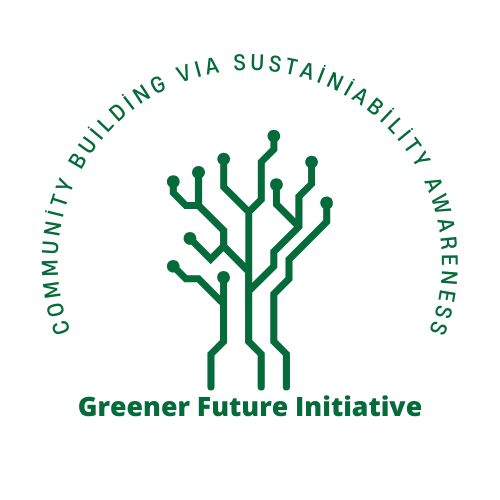With climate change becoming an increasingly pressing issue, schools are uniquely positioned to lead the charge toward a sustainable future. Adopting a net-zero strategy is very crucial. Adopting this strategy can reduce school carbon footprints, educate future generations about sustainability, and serve as a model for their respective communities.
But what does it mean to go net zero, and how can schools achieve it? These two themes form the focus of this article.
Here are the 10 key steps to implementing a net-zero strategy in schools.
1. Understand the Concept of Net-Zero
Understanding what you are about to get into is the first step in anything you do.
Before embarking on the journey, it’s essential to understand what net-zero means. A net-zero school balances the greenhouse gases it emits with the amount it removes from the atmosphere. This can be achieved by reducing emissions through energy efficiency and renewable energy while offsetting any remaining emissions through carbon capture or other methods.
2. Conduct a Carbon Audit
The first step in any net-zero strategy is to understand the current carbon footprint of the school. A carbon audit involves:
- Measuring Energy Use: Schools should assess the energy consumption in buildings, lighting, and heating systems.
- Transportation Emissions: Calculate emissions from school buses, staff vehicles, and student commutes.
- Waste Management: Examine waste production and disposal methods.
With a comprehensive audit on the ground, a baseline for identifying areas where improvements can be made is provided.
3. Develop an Action Plan
Once the audit is complete, schools should develop a detailed action plan with clear goals and timelines.
This plan should include:
- Short-term Goals: Immediate changes like switching to LED lighting or reducing paper use.
- Long-term Goals: Investments in renewable energy systems or sustainable infrastructure.
- Monitoring Systems: Tools to track progress and adjust strategies as needed.
4. Optimize Energy Efficiency
Reducing energy consumption is one of the most impactful steps schools can take. Schools can optimize energy efficiency by considering the following:
- Upgrading Insulation: Proper insulation reduces the need for heating and cooling.
- Installing Smart Systems: Use programmable thermostats and smart lighting to optimize energy use.
- Energy-Efficient Appliances: Replace old equipment with energy-efficient alternatives.
5. Transition to Renewable Energy
Renewable energy sources are key to achieving net-zero. Here are 3 things schools can do to employ alternative energy sources:
- Install Solar Panels: Solar energy can power classrooms, offices, and facilities.
- Explore Wind or Geothermal Energy: These alternatives can complement solar power depending on the location.
- Purchase Renewable Energy Credits: Offset emissions by supporting green energy projects elsewhere.
6. Address Transportation Emissions
Transportation is a significant source of emissions. Schools can:
- Promote Walking and Cycling: Encourage students and staff to use sustainable modes of transport.
- Transition to Electric Buses: Replace diesel buses with electric or hybrid models.
- Carpool Initiatives: Facilitate carpooling among staff and students.
7. Implement Sustainable Waste Management
Waste reduction is another critical component of a net-zero strategy. Actions to be taken in this aspect include:
- Recycling Programs: Ensure recycling bins are accessible and properly labeled.
- Composting: Set up composting systems for organic waste.
- Reducing Single-Use Items: Eliminate single-use plastics and encourage reusable alternatives.
8. Integrate Sustainability into Education
Schools have the unique opportunity to teach students about sustainability. This can be achieved by:
- Incorporating Sustainability into the Curriculum: Teach students about climate change, renewable energy, and conservation.
- Student-Led Projects: Encourage students to lead green initiatives, such as tree planting or energy-saving campaigns.
- Awareness Programs: Host workshops and events to educate the school community.
9. Engage the Community
Achieving net-zero is a collaborative effort. Schools should:
- Involve Parents and Staff: Keep them informed and engaged in sustainability initiatives.
- Partner with Local Organizations: Collaborate with environmental groups or businesses to gain resources and expertise.
- Share Success Stories: Highlight achievements to inspire other schools and communities to take action.
10. Evaluate and Adjust
Sustainability is an ongoing process. Regularly evaluate the effectiveness of your strategies and make necessary adjustments.
Use data from monitoring systems to identify areas for improvement and celebrate milestones along the way.
The Future of Net-Zero Schools
Transitioning to a net-zero model is not just about reducing emissions; it’s about fostering a culture of sustainability that empowers the next generation to tackle environmental challenges.
This article has provided a practical guide to the key steps to implementing net-zero model by schools. Schools can become beacons of hope by taking the steps outlined above.
Also, they will demonstrate that a sustainable future is not only possible but achievable.

